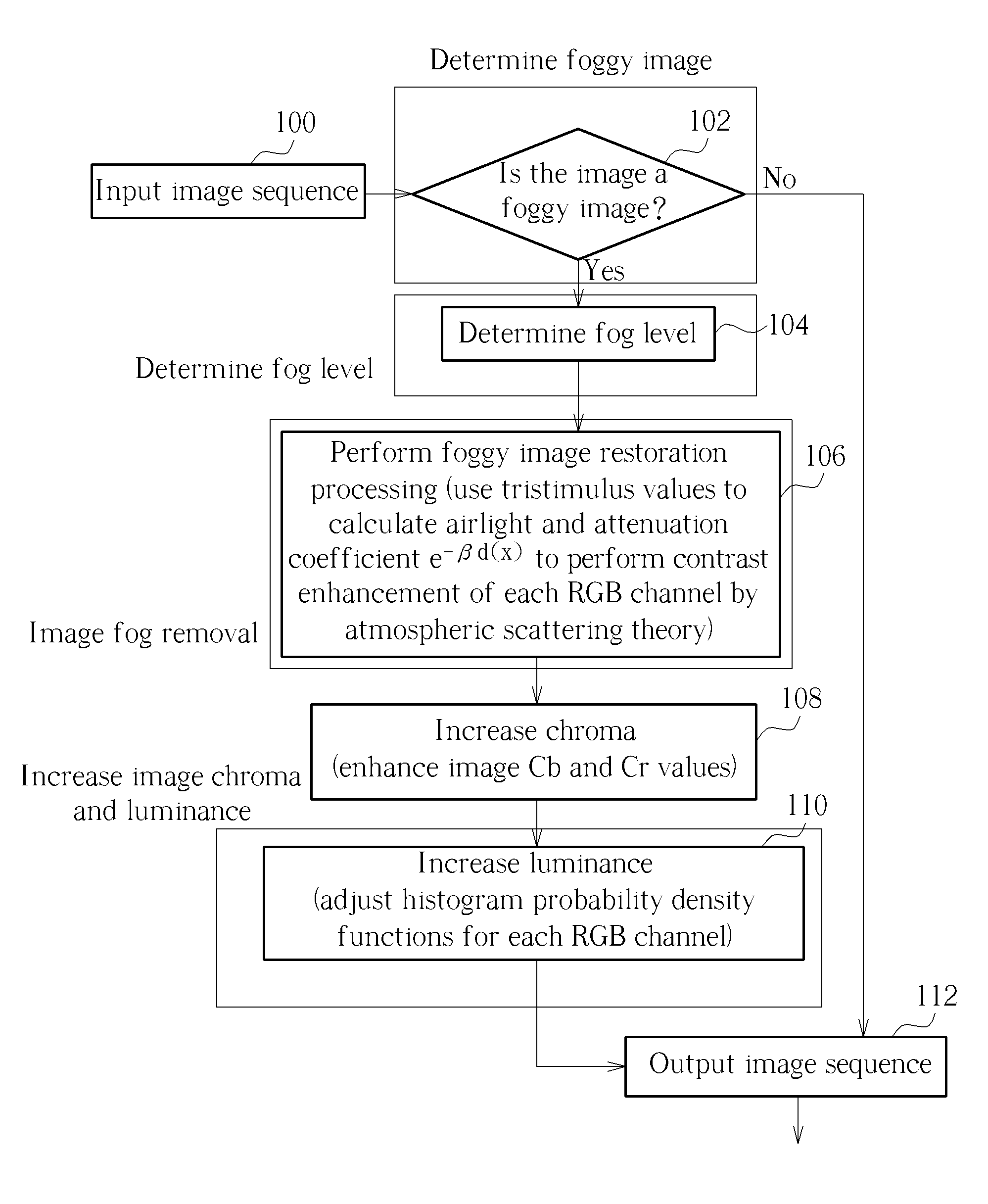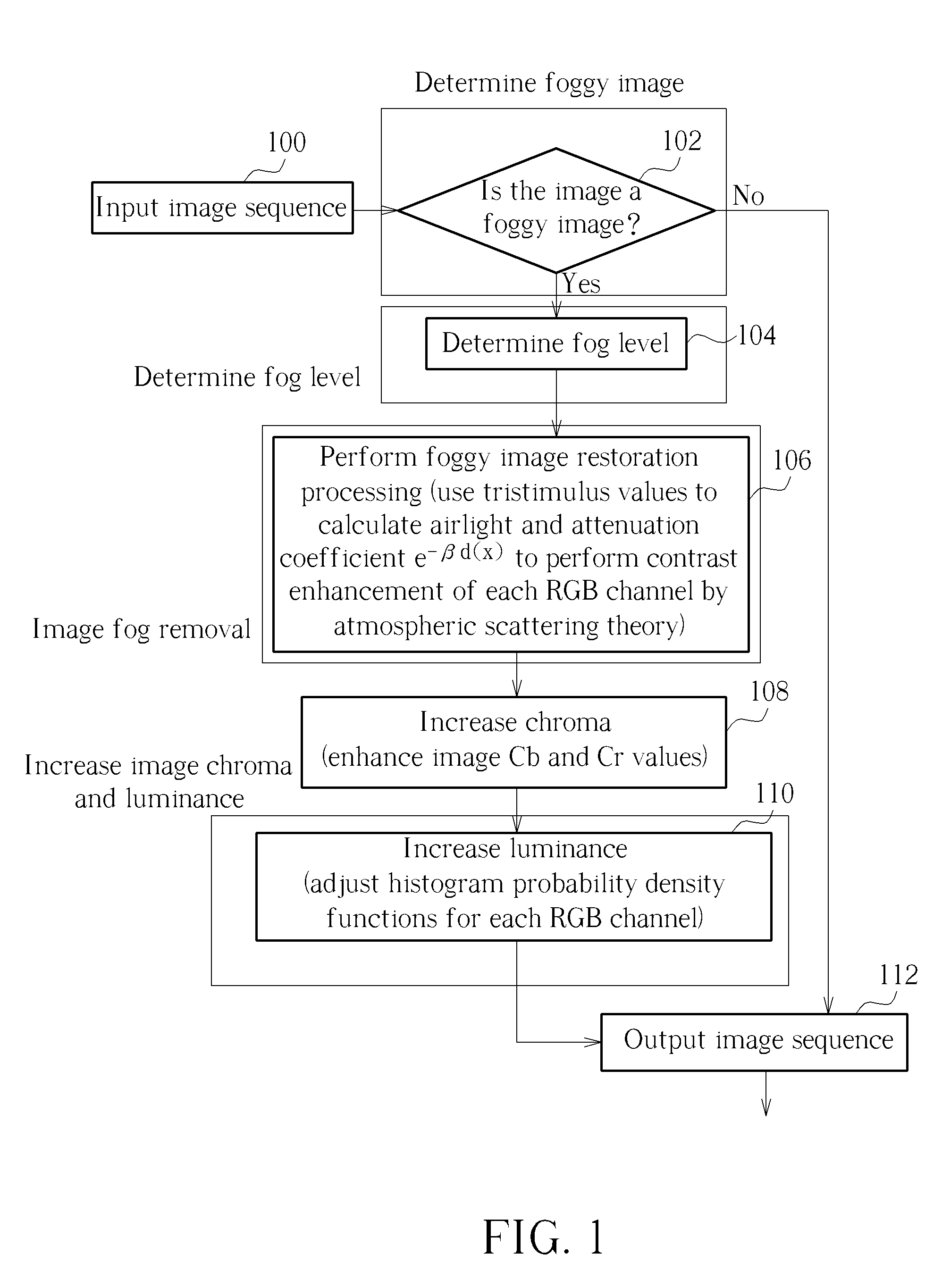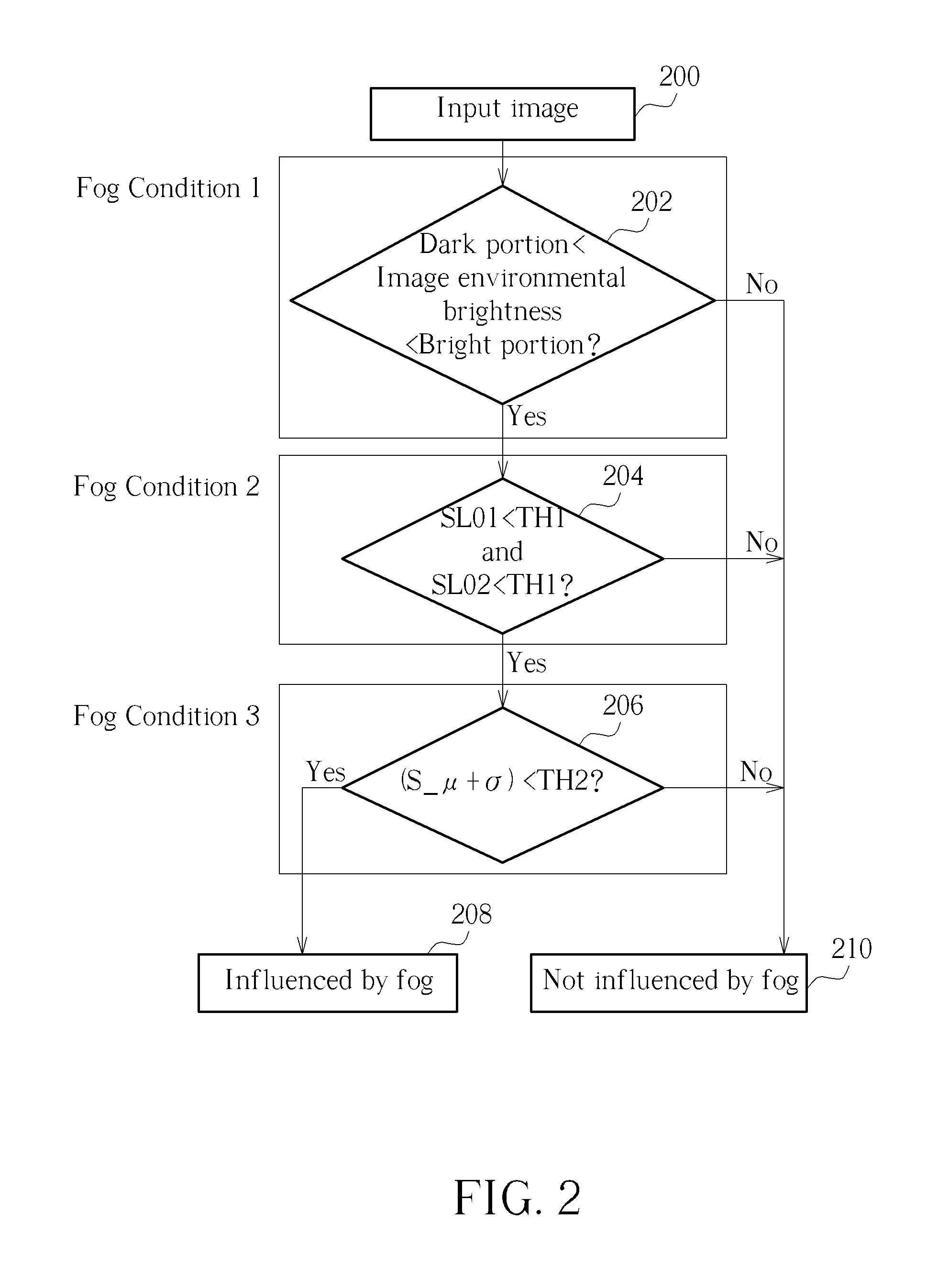Cleaning method for foggy images
a cleaning method and image technology, applied in image enhancement, image analysis, instruments, etc., can solve the problems of obstructing traffic control systems, image unrecognizable, and complex physical processes and conditions for fog formation
- Summary
- Abstract
- Description
- Claims
- Application Information
AI Technical Summary
Benefits of technology
Problems solved by technology
Method used
Image
Examples
Embodiment Construction
[0040]Please refer to FIG. 1, which is a flowchart of a cleaning method according to one embodiment. First, it is determined whether the image is a foggy image. If so, a fog level of the image is calculated. Then, color change of the foggy image is analyzed, and the influence of the fog is removed. Foggy images may have insufficient color, so that the image may have a dark bias or a color bias after removing the fog. Thus, chromaticity is increased in the image after fog removal. Then, visibility of the image is increased. In this way, a foggy image can be cleaned through use of the cleaning method.
[0041]The method may be applied in specific transportation domains, e.g. for ships entering or leaving a port, for automobiles travelling along roads, and in airport control towers for planes taking off or landing, to increase safety in low-visibility environments. Additionally, the cleaning method may be utilized in pre-processing stages of intelligent transportation digital video record...
PUM
 Login to View More
Login to View More Abstract
Description
Claims
Application Information
 Login to View More
Login to View More - R&D
- Intellectual Property
- Life Sciences
- Materials
- Tech Scout
- Unparalleled Data Quality
- Higher Quality Content
- 60% Fewer Hallucinations
Browse by: Latest US Patents, China's latest patents, Technical Efficacy Thesaurus, Application Domain, Technology Topic, Popular Technical Reports.
© 2025 PatSnap. All rights reserved.Legal|Privacy policy|Modern Slavery Act Transparency Statement|Sitemap|About US| Contact US: help@patsnap.com



